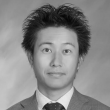
Researcher, Fujitsu Laboratories Ltd
Takashi Yamazaki received Doctor of Science from the Tokyo University of Science in Japan in 2004. Since 1999, he has investigated structural analysis at atomic resolution by transmission electron microscopy (TEM). Since 2008, he has been with FUJITSU Laboratories, and engaged in the investigation of nanometre scaled quantitative analysis of electronic devices by using TEM. Since 2009, he has engaged in the study of numerical optimization for quantitative analysis of analytical techniquea.
Speeches
With progress in recent electronic devices and functional nanometre-scale materials, analysis techniques are receiving increased attention. However, owing to the complexity of materials and of the control of instruments, belonging to the individual of the analysis technique becomes remarkable as the problems for development of the company. We feel that numerical optimization techniques, as methods, have great potential to solve such a problem. In this presentation, we provide examples in which numerical optimization is applied to analysis techniques.
First, we present an example in which stress induced into an electronic device sample at the nanometre scale was analyzed through numerical optimization. Because the induced stress in an electronic device changes electric characteristics in an advantageous manner but with drawbacks, it is important to measure the induced stress. However, we cannot measure the stress using conventional stress measuring instruments, because the size is of the nanometre scale. Therefore, we focused on the electron diffraction patterns and suggested a method to quantitatively measure the bending of the sample on the basis of a comparison between an experimental image and a simulated image. However, because the image matching was performed by eye, the method lacked both efficiency and objectivity in its measurements. Therefore, we searched for the simulated image having the optimized parameters to reproduce the experimental image using modeFRONTIER®. Furthermore, we applied modeFRONTIER® to the process of measuring the quantitative stress necessary to cause the bending introduced into a sample through a finite element method. The stress applied by the source to a sample could be measured objectively with high efficiency and high accuracy by using this method.
In order to perform radiation analysis with high precision, a second example concerning the structural optimization of an alpha-particle detector is introduced. A malfunction, called the soft error, may occur by the illumination of charged particles, such as alpha particles, in an electronic device. Using the analysis technique, we must exactly measure the low-dose alpha particles to minimize the influence of the soft error. We suggested a method, called the alpha-tracking method, using the solid detector to measure the infinitesimal alpha particles. However, this method revealed that the detector cannot detect all irradiated alpha-particles. Therefore, we searched for the optimal shape of the solid detector using modeFRONTIER®. The irradiation process of the alpha particles was reproduced through a Monte Carlo simulation, and the optimization was performed for finding the optimal shape of a solid detector. Because we understood that the time necessary for the detection of alpha particles using the solid detector and the area of the solid detector have a trade-off relationship, numerical optimization was performed by setting these values to be object functions. As a result, we found the optimal shape of a solid detector; a solid detector of the optimal shape is two times as efficient as a conventional solid detector. In this presentation, the results of this optimization and the cluster analysis are explained in detail.
Furthermore, to control analysis instruments, such as scanning probe microscopes, we suggested a control system to show the optimal measurement condition that yields the most suitable result by combining modeFRONTIER® with LabVIEW. Those results are also reported.


